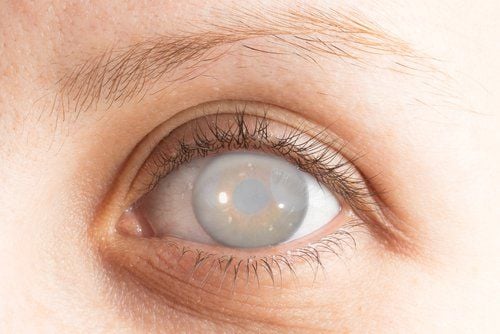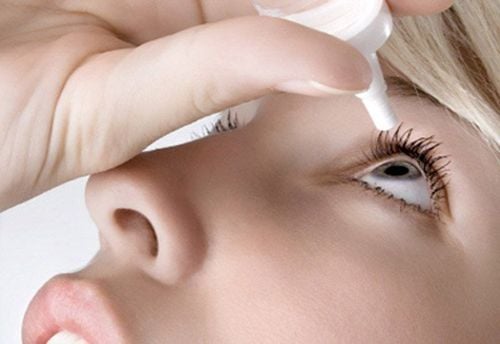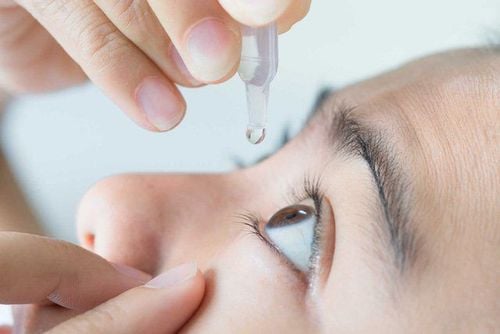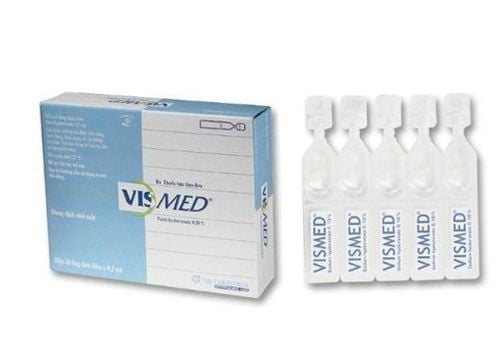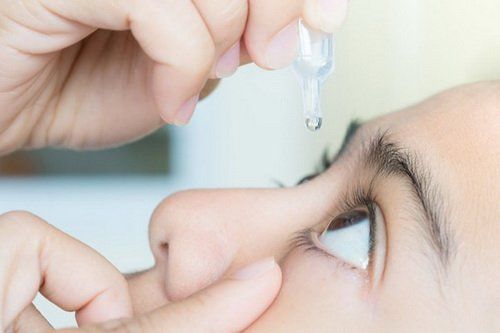This is an automatically translated article.
If you have ever accidentally tasted tears while crying, you will find that they will taste salty, because they are actually made up of water and a little salt. So are there other forming factors or not? Let's find out what tears are made of and why we have tears through the following article.
1. The composition of tears and their role in health
1.1. What are tears made of? Tears are produced in the lacrimal gland (tear duct) at the outer corner of the eyelid. These glands select certain components from your plasma to produce tears. The components of basic tears include:
Water Electrolytes (sodium, potassium, chloride, bicarbonate, magnesium and calcium). These are the ingredients that make tears salty Protein (lysozyme, lactoferrin, lipocalin and IgA). The composition of tears is only about 1/10 of the protein of plasma Lipid Mucins (mucus).
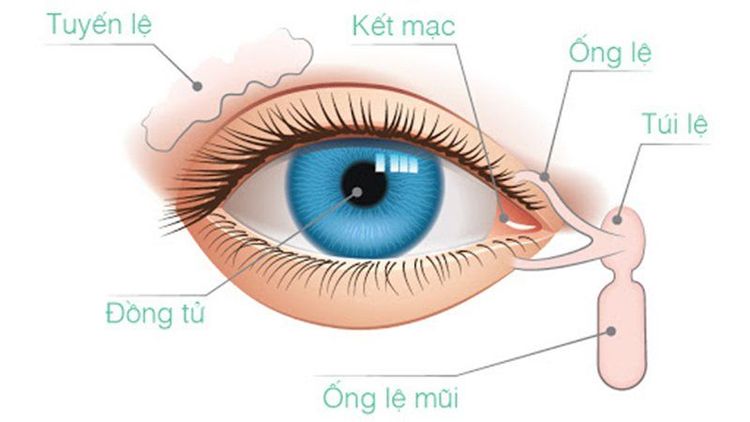
Tuyến lệ tạo ra nước mắt
1.2. The role of tears Tears play an important role in keeping us healthy. Tears keep the surface of the eyeball clean and moist and protect the eye from damage. Although, it looks like ordinary water, our tears are actually quite complex. Tears are made up of mucus, water and oils - each of which is essential to the eye.
Mucus: Coating the surface of the eye, helping to bind the tear layer to the eye. Without a healthy mucus layer, dry spots can form on the cornea, the dome-like transparent structure at the front of the eye. Water: Really like a saline solution containing a variety of vitamins and minerals that are important for the normal function of cells. These nutrients are important for keeping the top layer of cells of the eye's surface healthy and the epithelium functioning properly. Oil: Prevents evaporation of tears. Some people don't make enough oil (sometimes too much oil), or the oil composition is unstable, which causes tears to evaporate too quickly and leads to dry eyes. Our tears also contain natural antibiotics, called lysozyme, which help fight bacteria and viruses, keeping the surface of the eye healthy.
Finally, because the cornea has no blood vessels, tears are also a means of carrying nutrients to the cells there.
2. Types of tears
2.1. Tears reflect irritants When eyes are irritated, tears are reflexively secreted to wash away foreign particles, such as vapors from slicing onions, perfumes or strong, pungent odors. These tears can also appear when bright lights and hot stimuli are present in the eyes, or heat on the tongue and mouth. They have also been linked to vomiting, coughing and yawning. Reflex tears are secreted in much larger quantities than basal tears, but both serve the same purpose of protecting the eye.
2.2. Emotional Tears These tears are associated with a variety of emotions, often due to emotional stress, anger, grief, suffering, or physical pain. Not only negative emotions, people also cry when extremely happy, such as when watching comedy and laughing. Emotional tears will be accompanied by blushing and sobbing like coughing, shortness of breath, sometimes whole upper body spasms, tremors.
Emotional tears have a higher protein content than stimulant-induced reflex tears. Emotional tears were found to have more hormones, including prolactin, adrenocortical hormone, and leucine enkephalin. By eliminating stress hormones, crying is a good way to deal with stress. Emotional tears are created to stabilize mood as quickly as possible, along with physical reactions, such as increased heart rate and slower breathing.
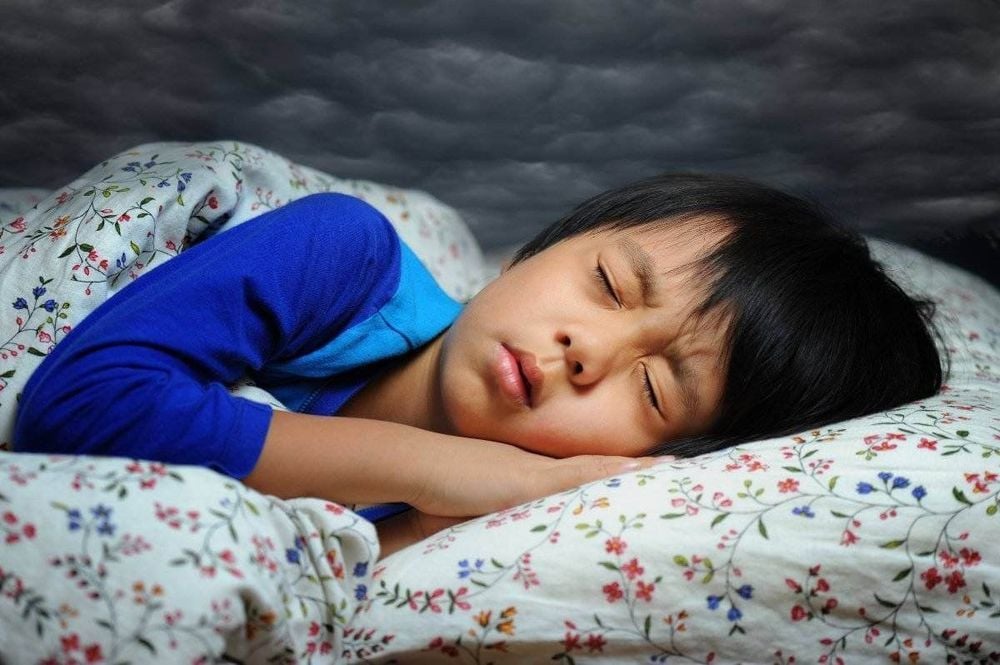
Gặp ác mộng có thể gây ra tiếng khóc khi ngủ
2.3. Tears during sleep When you sleep, the tear ducts (tear glands) reduce water and protein into the tears, but increase the number of antibodies present, and infection-fighting cells also migrate to the conjunctival sac .
Although more common in infants and children, people of all ages can cry while sleeping. Possible causes of crying while sleeping or waking up include:
Nightmares Sleep panic attacks Grief over loss Depression, stress and anxiety Chronic pain Allergies . 2.4. Elderly Tears Sometimes, our tear ducts do not produce enough quantity and/or quality of tears to keep the surface of the eye adequately lubricated. This condition is known as dry eye and affects a lot of people, especially menopausal women due to hormonal changes. The risk of dry eye disease increases with age. As you get older, you usually produce fewer tears, and the lacrimal gland also reduces more proteins into tears.
3. Interesting facts about tears
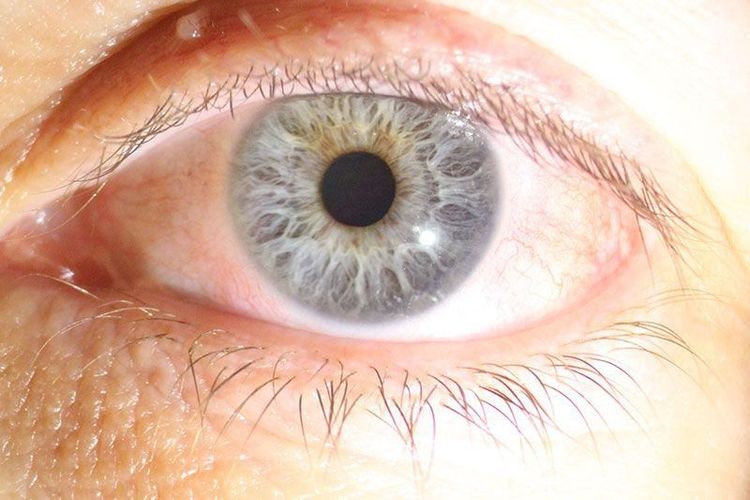
Hội chứng khô mắt xảy ra khi không đủ nước mắt để bôi trơn mắt
Watery eyes can be a sign of dry eye syndrome Dry eye syndrome is a common condition that occurs when there are not enough tears to lubricate the eye, causing burning or burning sensation. Although it may sound odd, dry eyes also often cause watery eyes, as a response to discomfort.
You don't have to worry about running out of tears According to the American Academy of Ophthalmology, humans produce about 56 - 113 liters of tears per year. While tear production can slow down due to certain factors, such as health and age, you can't actually stop crying.
Tears running down your nose and throat Your eyes and nose are connected. When the tear glands secrete tears, they flow down through the nasal bones and into the back of the nose, and then down the throat. When you cry, the tears mix with the mucus in your nose. That's why you also have a runny nose when you cry.
Crocodile tears are real The term “crocodile tears” is used to describe someone who is pretending to cry. This phrase originates from the myth that crocodiles cry when they eat people. According to a 2007 study, crocodiles can actually cry when they eat, but the reason for these tears is still unknown.
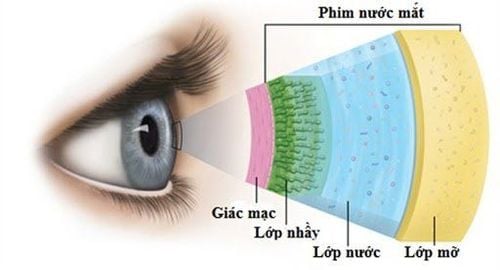
Cấu tạo ba lớp của màng nước mắt
Newborns do not produce tears when they cry The reason is because the baby's tear glands are not fully developed. Babies may cry without tears in the first month of birth. Some children also have blocked tear ducts. In these cases, your baby may only produce tears on one side, or even none.
Animals shed tears, but have nothing to do with emotions Animals secrete tears to lubricate and protect the eyes. Although they can shed tears in response to irritants and trauma, they are not as emotionally involved as humans.
Women cry more than men Although it's not known exactly why, it may be related to men having smaller tear ducts. Besides, emotional tears contain prolactin, a hormone that promotes breast milk production. Women have 60% more prolactin than men.
In summary, tears are an essential substance produced by the body to maintain healthy eyes and vision. Tears also have other purposes such as responding to an external stimulus or expressing a certain emotion. If you are experiencing any problems with tears or feel you have dry eyes, see a specialist medical facility for an evaluation.
Eye health care is an important part of general health. In order to detect the risk of eye diseases early, you need to be examined and diagnosed with eye problems early, to avoid long-term progression of the disease, which can easily lead to unfortunate complications, especially affecting your health. seriously affect the health and quality of life of patients.
Eye specialties at Vinmec International General Hospital are international standard medical facilities with the function of examining and treating many diseases, including Ophthalmology with comprehensive quality in both expertise and health services. If there is a need for examination, customers can directly visit Vinmec Health System nationwide for examination or book an appointment online.
Please dial HOTLINE for more information or register for an appointment HERE. Download MyVinmec app to make appointments faster and to manage your bookings easily.
References: kellylaser.com, verywellhealth.com, healthline.com




